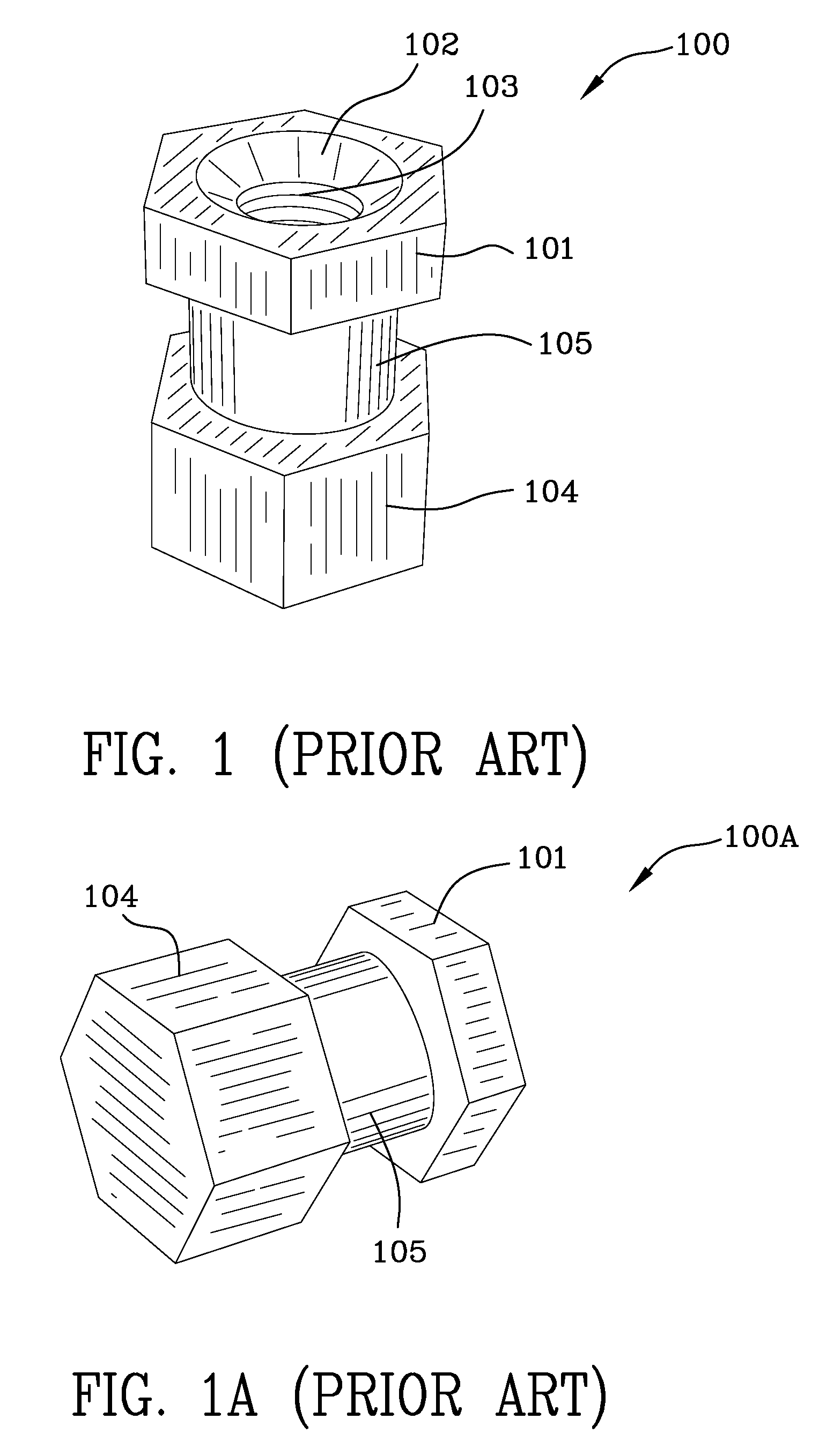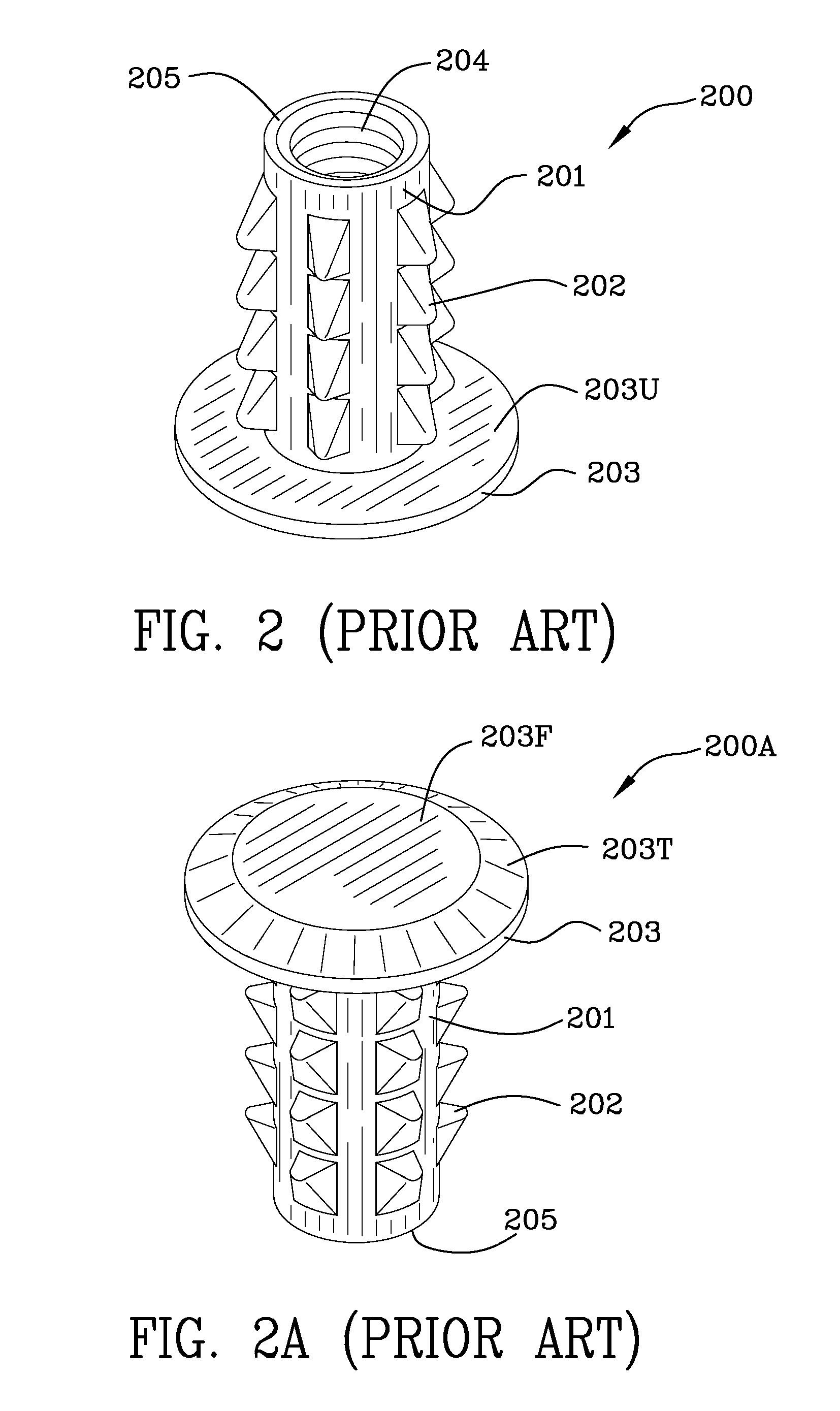Sealed end t-nut
a t-nut and sealing technology, applied in the direction of threaded fasteners, manufacturing tools, bolts, etc., can solve the problems of lack of strength of zinc alloys, high cost of brass inserts, and high cost of zinc die cast inserts
- Summary
- Abstract
- Description
- Claims
- Application Information
AI Technical Summary
Benefits of technology
Problems solved by technology
Method used
Image
Examples
Embodiment Construction
[0050]FIG. 3 is a top perspective view 300 of a t-nut threaded completely through the part. FIG. 3A is another perspective view 300A of the t-nut threaded 302 completely through the part. FIG. 3B is a top view 300B of the t-nut with through threads. Flange 301 of the t-nut is viewed in both FIGS. 3 and 3A and is generally cylindrically shaped and terminates in a circumferential edge portion 306. T-nuts are manufactured from sheets or slugs of steel (or stainless steel) which is deformed to include a barrel or shank such as that denoted by reference numeral 303. Barrel or shank 303 terminates in an open end portion 308. Shank 303 is cylindrically shaped and includes interior threads 302. Interior threads 302 extend all the way from the opening 302A in the flange to the end portion 308 of the shank 303. Shank 303 transitions in a curved surface 304 into the underside 305 of the flange. FIG. 3C is a side view 300C of the t-nut with through threads. FIG. 3D is a cross-sectional view 300...
PUM
| Property | Measurement | Unit |
|---|---|---|
| resistance | aaaaa | aaaaa |
| shape | aaaaa | aaaaa |
| time | aaaaa | aaaaa |
Abstract
Description
Claims
Application Information
 Login to View More
Login to View More - R&D
- Intellectual Property
- Life Sciences
- Materials
- Tech Scout
- Unparalleled Data Quality
- Higher Quality Content
- 60% Fewer Hallucinations
Browse by: Latest US Patents, China's latest patents, Technical Efficacy Thesaurus, Application Domain, Technology Topic, Popular Technical Reports.
© 2025 PatSnap. All rights reserved.Legal|Privacy policy|Modern Slavery Act Transparency Statement|Sitemap|About US| Contact US: help@patsnap.com



